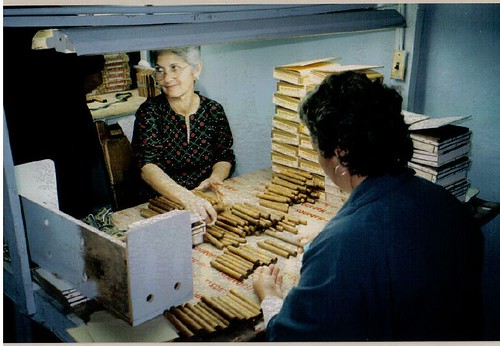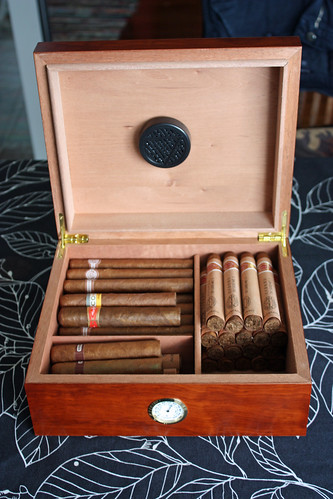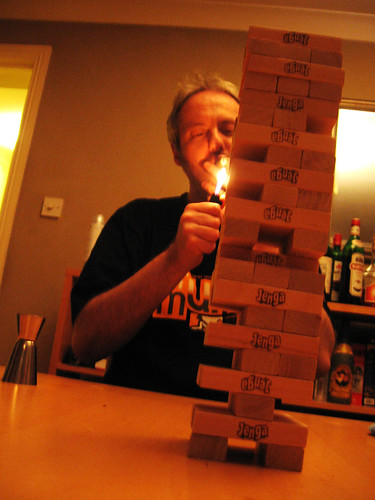It was over 500 years ago that the great explorer and adventurer Christopher Columbus first discovered tobacco and from this came what today is enjoyed by connoisseurs the world over, the cigar. The rise in popularity of the cigar was unprecedented with kings, presidents, Hollywood movie stars, discerning gentlemen and a fair few ladies of the world, all enjoying the pleasures associated with smoking what is considered as the best cigars produced in the world.
The cigar has been around for a long time.

The country that led the way in the production of some of the most esteemed cigars the world has ever known was and still is, Cuba. The island has been the leading producer of fine cigars and as early as the 16th century even poorer Cubans were growing and harvesting crops of tobacco for the cigar industry which steadily grew until the cigar became Cuba’s national symbol with the Havana cigar taking pride of place as being the finest cigar on the planet.
However, with a US embargo on Cuba after the rise of Fidel Castro, Havana’s cigar industry was put in jeopardy. This episode in the history of the cigar saw many Cuban cigar-makers upping sticks and moving to the Caribbean so they could continue to ply their trade. The Dominican Republic, Mexico and Honduras were the countries these Cuban master cigar-makers chose to settle in. It was these countries that began producing some of the best high-quality cigars both premium and super-premium which they sold to discerning American cigar lovers.
Handmade Cigars: A Blend of High-quality Tobaccos
These handmade cigars whether from the island of Cuba or elsewhere in the Caribbean are blended with choice, high-quality tobaccos. Throughout the centuries they have been made in a traditional way with tobaccos being aged to perfection before they are hand rolled into what has become known as premium cigars which today are all the rage with the Dominican Republic being a prolific producer of handmade cigars a large volume of which are exported and sold to a US market and elsewhere in the world.
The Choice of the Rich & the Famous
Smoking handmade cigars is synonymous with the rich and the famous. Celebrities, kings, politicians and other famous people all enjoy their cigars following a sumptuous meal whether it’s a luncheon or dinner. Smoking clubs where gentlemen are seen enjoying large, luxury cigars are well known and found in many of the world’s major cities, and often images of gentlemen’s smoking clubs are used in scenes of many a film. Over time, the enjoyment of smoking a premium handmade cigar has grown from strength to strength and today is still one a luxury enjoyed by many whether male or female.
Cigar Etiquette
Over the years cigar etiquette has emerged which includes “store etiquette” too. Some people have made a full-time hobby out of buying and shopping for high quality cigars always following certain rules when they do. Moisture needs to be tested which sees people lightly grasping a cigar and being careful not to hold them too tightly which would result in cracking the cigar’s wrapper which are very fragile and as such they have to be handled with respect. It is considered as being quite rude to “smell” a cigar in a shop which is a behaviour that is frowned upon!
Next, there is the cigar “band etiquette” which is the piece of paper that is wrapped around a cigar typically closest to its head and which identifies the brand. Over the years a debate has been going on concerning “band etiquette” which involves whether a person should actually remove the band from the cigar before smoking it. Some connoisseurs choose to leave the band on their cigars to “show off” they are smoking an expensive premium cigar something which is frowned upon by other enthusiasts and connoisseurs.
The cigar has evolved over time.

Some connoisseurs believe that a band should be removed immediately and the cigar enjoyed without the band being on it but in reality there is no “right” or “wrong” and in truth the only reason not to remove the band from a cigar is so the cigar’s delicate wrapper leaves are not damaged in the process which could spoil the whole experience of smoking an expensive premium handmade cigar.
However, sometimes a band will fall off a cigar of its own accord albeit rarely, so whether a person leaves it on or not is something that will continue to be debated for a very long time and the fact that once a cigar has been half smoked the band is that much easier to remove plays a part in the process too. This is because the glue would have warmed up as the cigar is smoked making it that much easier to remove without damaging the cigar’s wrapper. If the band becomes a nuisance, then it should be removed with some people even collecting cigar bands as a hobby!
Better tobacco is now being used.

How Cigar Making Has Evolved
Cigar making has been likened to producing fine wines with each handmade premium cigar having its own particular blend much like a wine. When it comes to growing tobacco, not much has changed over the centuries, it still requires much experience and artistry with the plants being carefully nurtured in special nurseries before the seedlings are then transplanted in fields. A mere 2 tablespoons of these precious seeds produce a huge 10 acres of tobacco destined to be used in cigar making.
The All Important Harvesting
When the tobacco leaves are harvested it is done from the bottom of the plant upwards. The bottom leaf boasts the milder taste and is known as the Valdo.
The middle leaf, the Seco has a medium flavour and the Ligero, the top leaf boasts the strongest taste. The way tobacco leaves are harvested has remained the same throughout time and it done religiously in this manner.
Curing the Tobacco
The tobacco leaves are placed in bundles and are chosen for each bundle according their texture and their size before being hung out to dry in what is called a “curing” barn. The leaves will cure for anything from six to eight weeks because tobacco needs to ferment correctly so that when smoked, it has a wonderful aroma and taste. It is during the fermentation stage that all ammonias and other chemicals are naturally removed. If the tobacco has not be properly “sweated” or fermented, then it will have a bitter, harsh taste and will not be easy to smoke because the cigar will not stay lit.
The process of making a premium cigar is done meticulously with the filler, the binder and the wrapper being the three crucial components that make up the cigar. The tobacco has to be stripped and sorted during this preparation which is carried out just as it was in days of old by a master blender. It is the master blender who creates the “recipe” for the cigar by carefully selecting the leaves which can be up to four different tobaccos depending on ring gauge and the type or cigar that is being handmade.
Cigars have become world renowned.

The Hands of the Experts
Producing a fine cigar is in the hands of the experts known as the “bunchers” who form a cylindrical shape of the filler which they then roll in a binder leaf. This in turn is placed in a mould which encourages a cigar to take shape. The outer wrapper is then very skilfully applied to the cigar.
The Importance of the Marrying Room
Cigars must be left for a minimum of three weeks in what it called the “marrying room” which is temperature and humidity controlled. It is during this time that fine cigar tobaccos have time to blend their tastes and flavours. It also allows the tobacco’s moisture to level out and equilibrate.
The Importance of Wrappers
Wrappers have to be supple so they do not split when a cigar is rolled. They are an integral part a cigar’s structure which contributes to its flavour and all important appearance. Wrapper leaves are carefully grown; they are meticulously aged and expertly selected. However, there are many types of wrappers some of which are described below.
• Habana 2000™ – Grown from a Cuban Seed tobacco in Nicaragua
• Maduro – Can be very dark brown to almost black in colour which is due to the fact the leaves are exposed for longer to the sun and the cooking process takes longer as well as the time it takes to ferment the leaves
Many regions in the world are being used to grow tobacco.

• TBN – Carefully fermented in Indonesia and shade-grown, a dark wrapper that was created by pairing specific strains of tobacco from Java and Connecticut
Tobacco Regions of the Modern World
Today fine cigars are produced in various countries and islands of the world with the Connecticut Valley growing some of the finest wrapper leaves on the planet. Other cigar producing countries include the following:
• The Dominican Republic
• Indonesia
• Mexico
• Honduras
• Brazil
• Cuba
Cigars are seen as a luxury item that many people the world over enjoy. With this said there are two very important things that go into the making of the finest cigars in the world. First only the highest quality tobacco is used followed by a construction that is second to none with both factors being as important as the other. When it comes to a “fine” cigar it is the consistency which is the all-important end goal.
Image credits: Brian Birke, dblackadder, sridgway, Michael248 and NigelJohnWade
{ 0 comments… add one now }